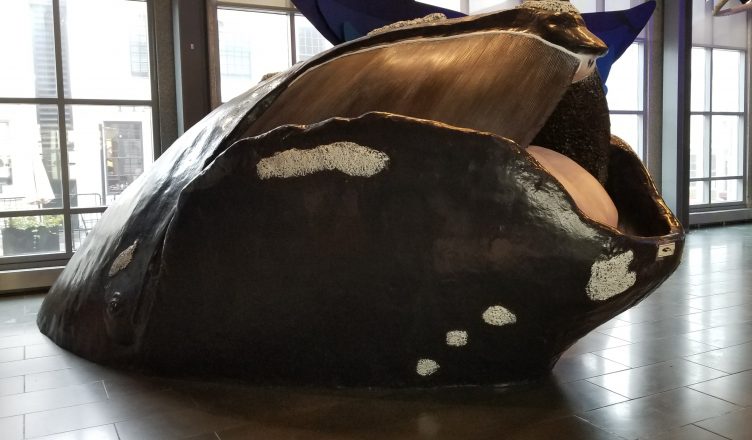Join us for a presentation related to this post: Sign Up Here
I recently had the opportunity to participate in the North Atlantic Right Whale Consortium at the New Bedford Whaling Museum. This is the first conference I have been to in person since before Covid, so needless to say, I was excited. Little did I know what a unique experience I was in for. Right whales are critically endangered and news about them is often negative. I’ll admit, it’s hard to stay positive sometimes. Being around the hard-working people trying to save these beautiful animals put things into perspective and gave me a new sense of hope.
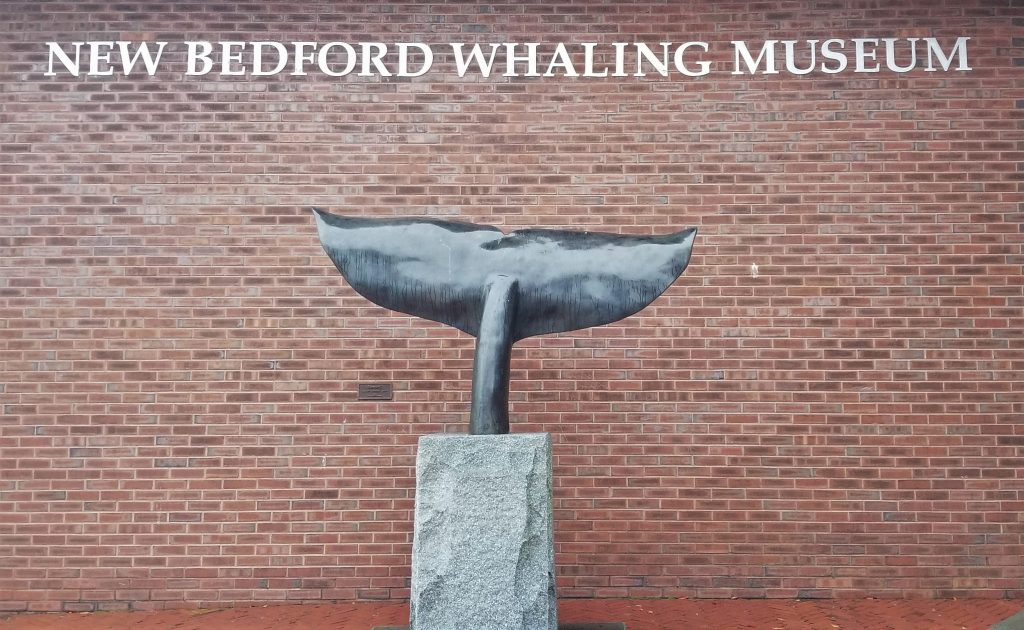
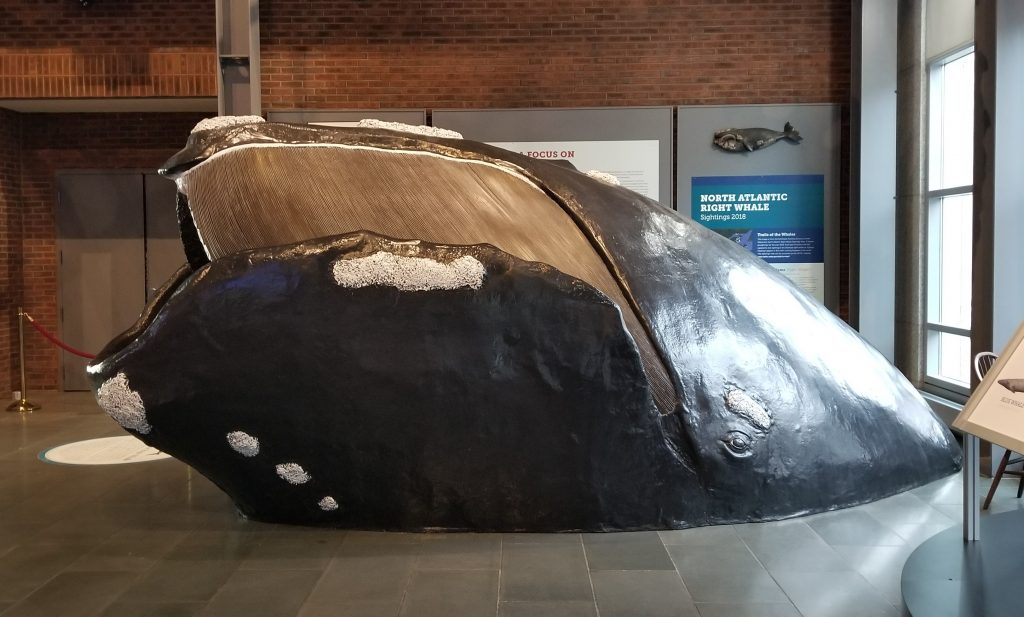
I had been to the last two virtual consortium meetings in 2020 and 2021. There was so much information in the virtual talks; I was amazed. I hardly knew anything about these whales other than their critically endangered status, and many people I speak with on our whale watches don’t even know what a right whale is. Talks ranged from acoustic behavior and physiology to current threats, conservation efforts, and even announcing new names for individuals in the population. To me, the conference during the past two years seemed to be more about celebrating these magnificent animals. However, the tone for 2022 was much different.
Exploring the New Bedford Whaling Museum
I arrived in New Bedford on the evening of The Ropeless Consortium meeting, which is held the day before the North Atlantic Right Whale Consortium meeting. As the name would suggest, this meeting deals with ropeless fishing gear. The agenda included talks on ropeless gear development, gear location marking techniques, and trials with ropeless gear. While I did not attend this meeting, I was able to grab a book of abstracts to catch myself up on what was discussed.
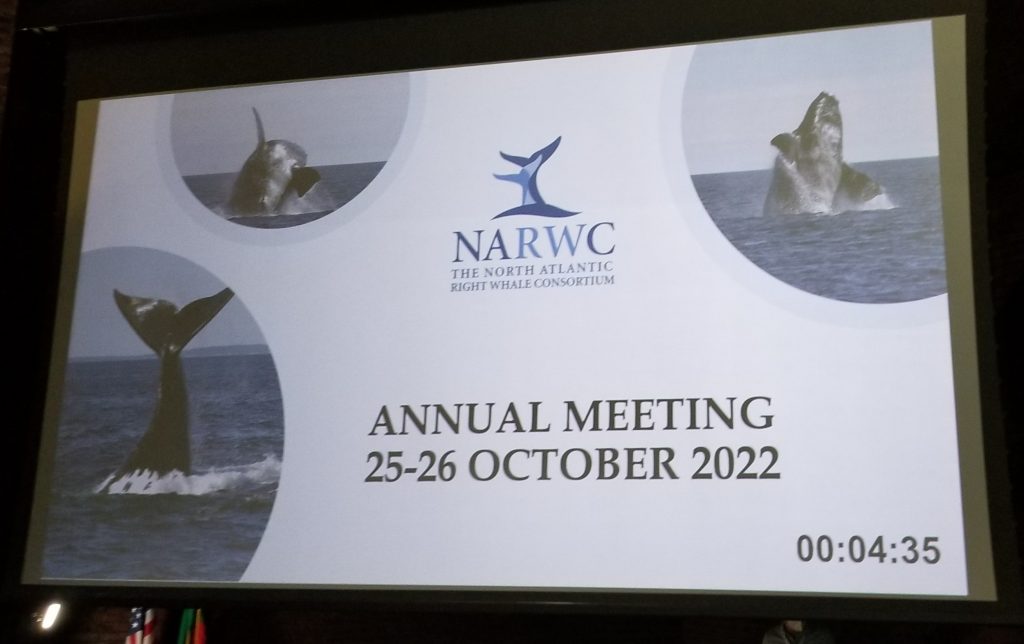
My first day at the consortium meeting was very exciting. During breaks, I had time to explore the New Bedford Whaling Museum. I had never been to the whaling museum before but had heard wonderful things about it. As soon as I entered the building I understood why. The first room contains three whale skeletons, hanging from the ceiling. While this is something I have seen before in other locations, the whaling museum was special. Upon walking underneath these skeletons, I immediately felt a rush of excitement as I looked up at the largest one. I have been to the Harvard Museum of Natural History, which has a fin, sperm, and right whale skeletons. These have impressed me each time I have seen them. Fin whales are the second largest animal that has ever lived. Looking up at the largest whale in the room, noting the size of its skull, it hit me: My goodness, that isn’t a fin whale. It was a blue whale! Seeing a blue whale has been on the top of my bucket list for YEARS now, and this certainly counts! I had no idea I would see a blue whale skeleton on this trip, and I was in awe.
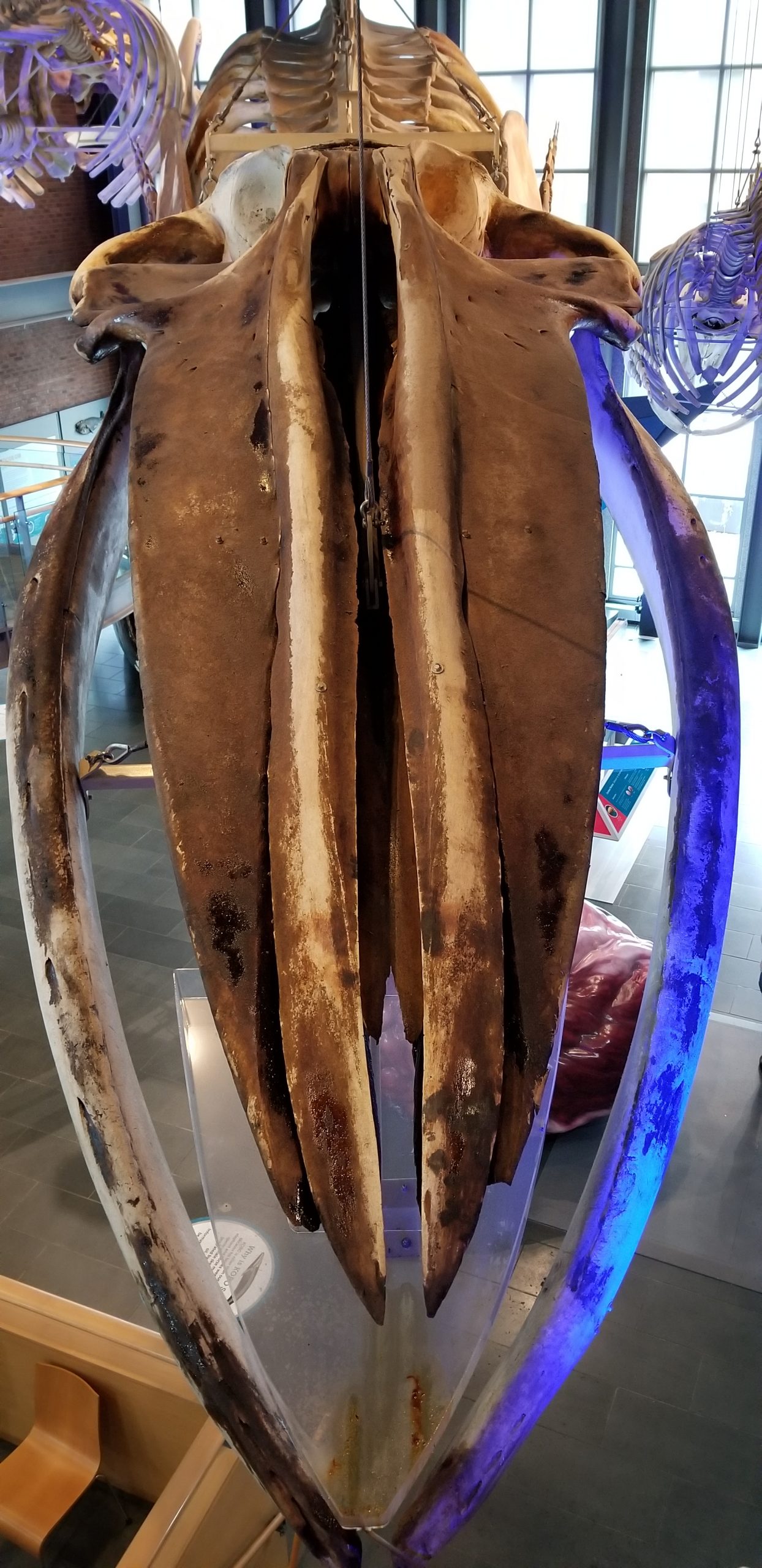
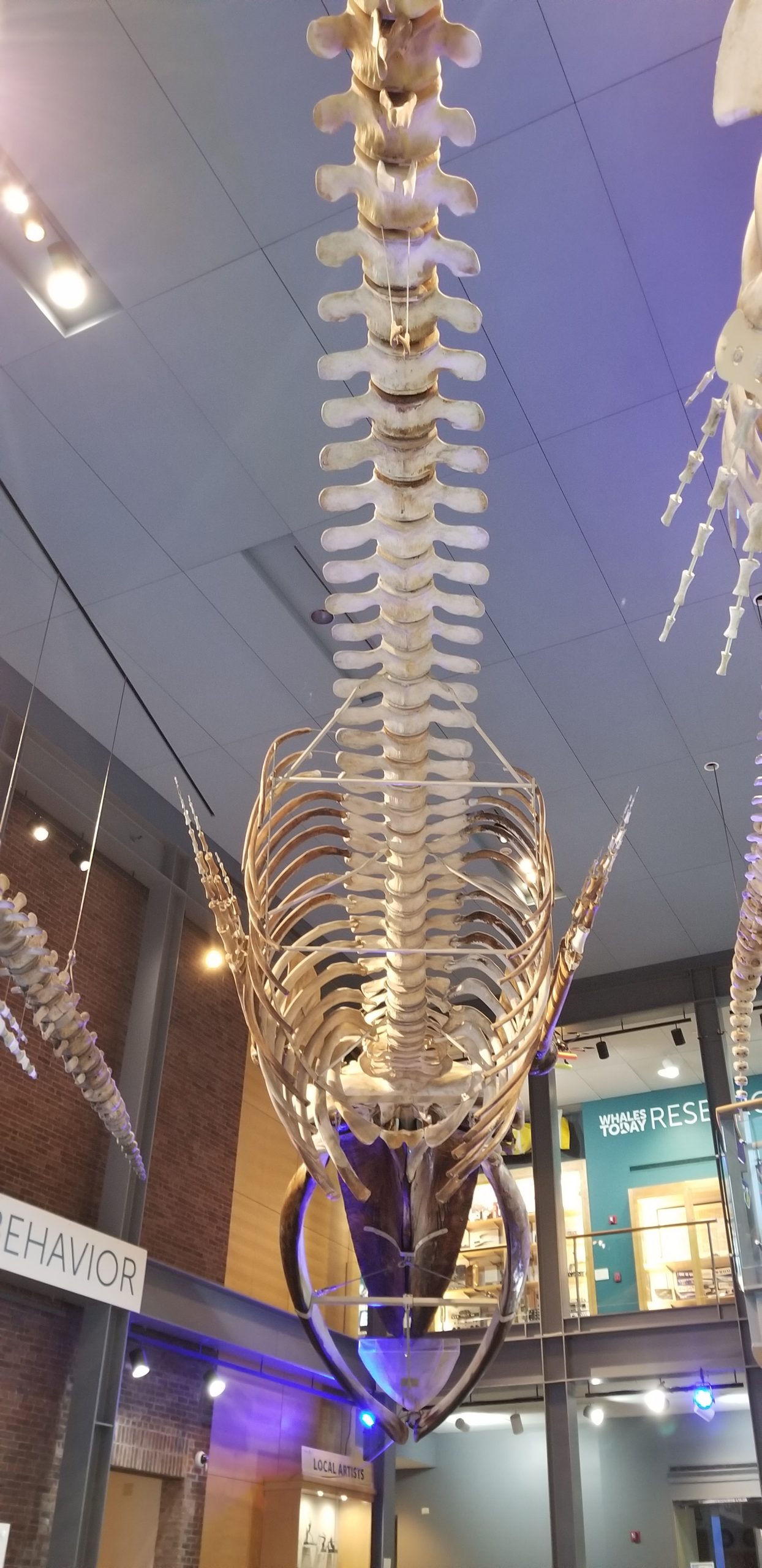
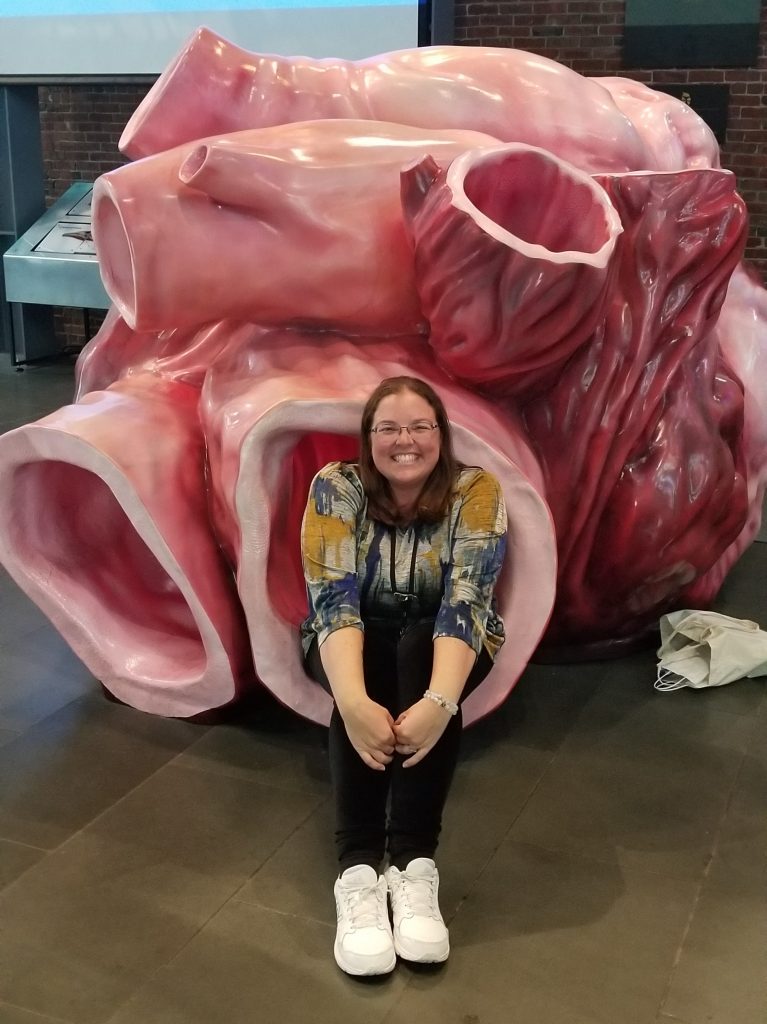
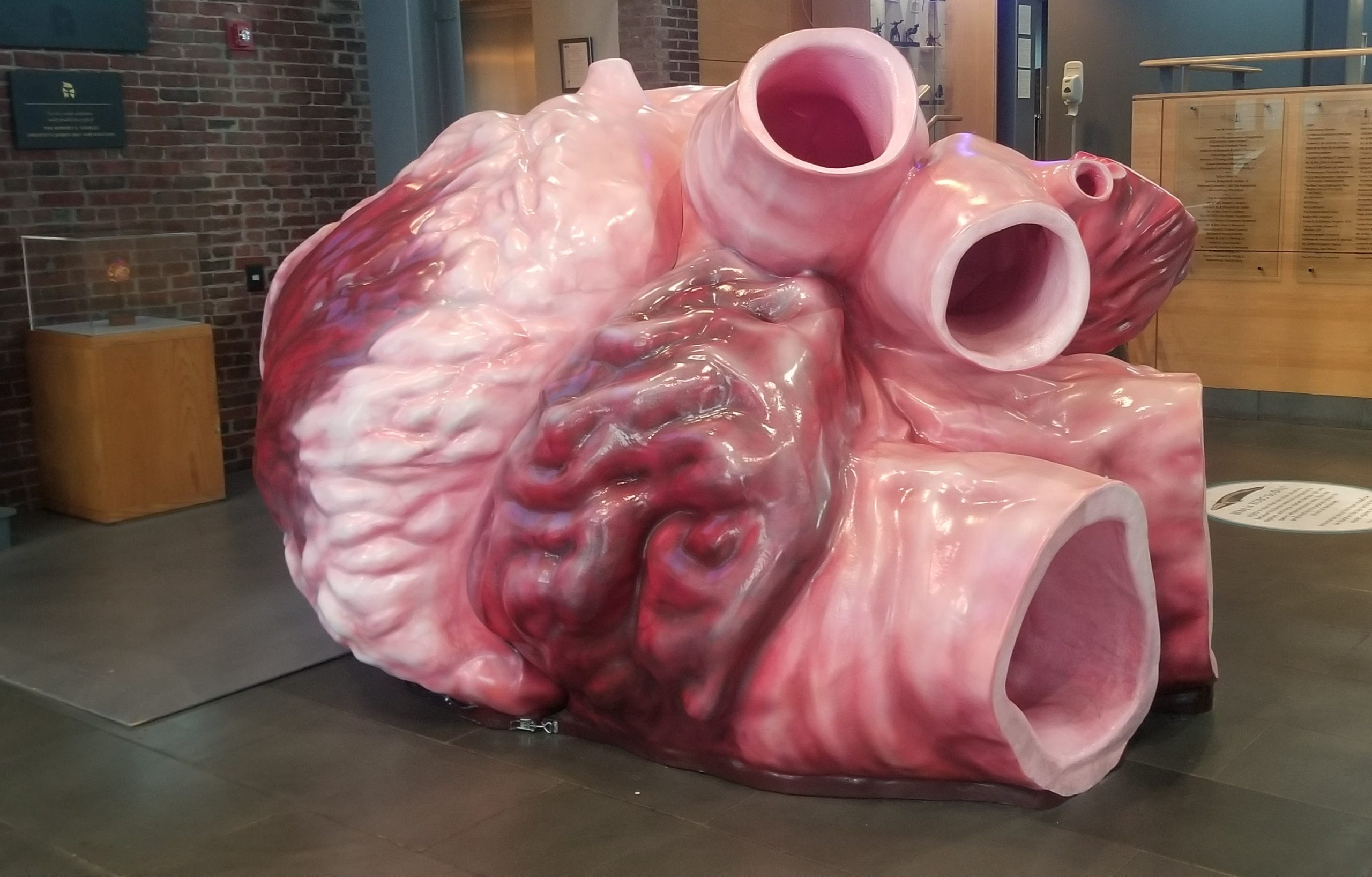
A Harsh Reality
A humpback whale hangs next to the blue whale. On the other side, there are not one, but two right whale skeletons. I did not even notice the second skeleton until someone else mentioned it. It was much smaller, and sort of hidden within the first one. The larger skeleton is a female named Reyna, and the smaller, her unborn first calf. Reyna was found dead after being struck by a ship, an all-too-common threat for North Atlantic right whales. She was 15 when she died in 2005. In a population with only about 100 breeding females, every loss is a critical loss. To add insult to injury, the fetus was also female.
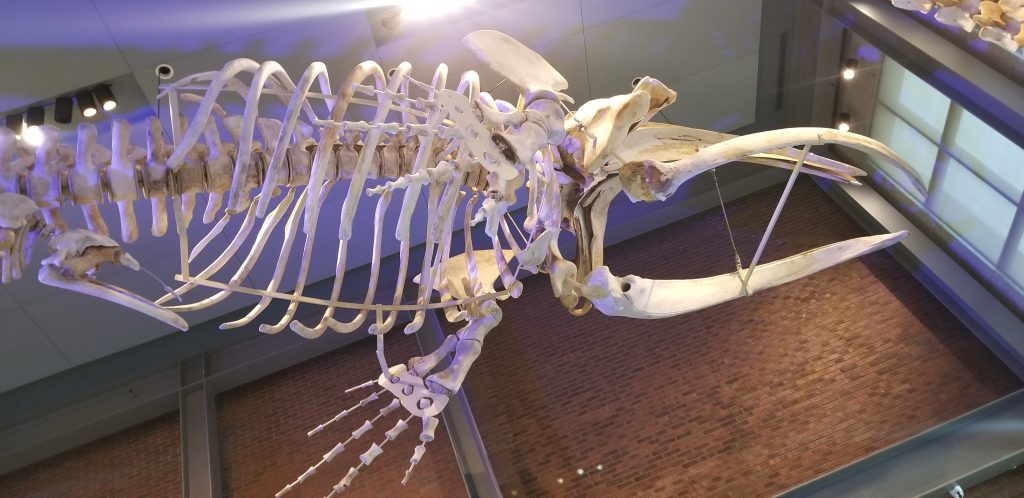
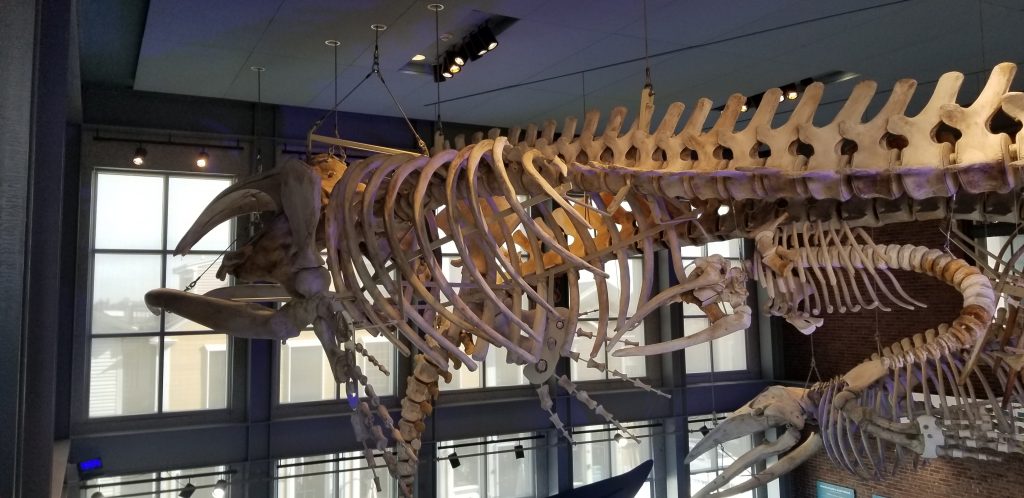
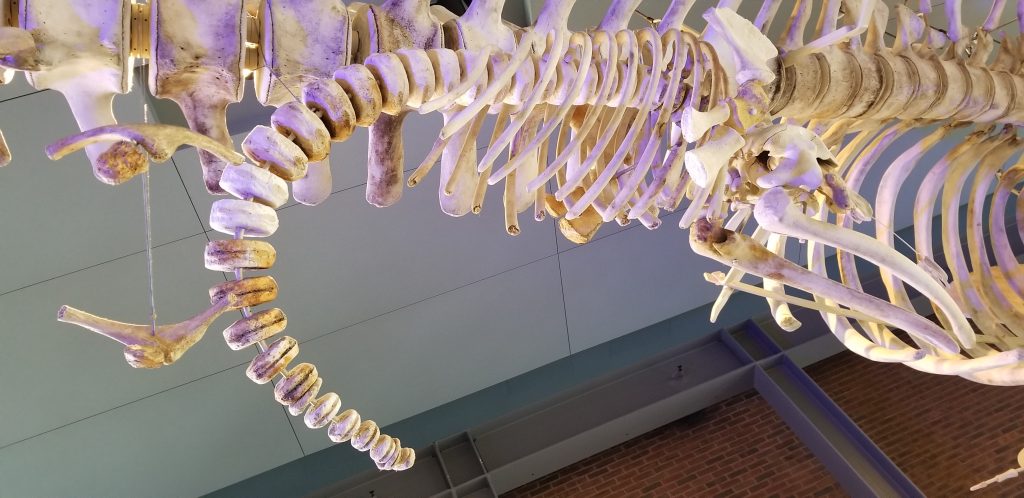
North Atlantic Right Whale Population
The Consortium released the newly estimated population size for the North Atlantic right whale on the first day of the meeting: 340. Three hundred and forty individuals are left, from a historic population of thousands before the days of whaling. Though they have made a slight recovery (the estimated population at the end of whaling was about 100 individuals), they still face many obstacles including vessel strikes, entanglement in fishing gear, increased anthropogenic noise, and climate change. We are facing an uphill battle with policy changes and new regulations in the fishing and shipping industries. Like in many other environmental issues, reluctance to change is hindering the efforts of consortium members and others.
Some other takeaways from this year’s Consortium meeting:
- From 2017 to the time of the meeting, there have been 14 deaths of North Atlantic right whales from vessel strikes
- Mandatory and voluntary slow zones are in effect in the United States and Canada, with mandatory zones seeing the highest participation rates
- Proposed changes include more mandatory slow zones, adding smaller vessels to these rules, and developing ways to detect right whales
Collaboration is Key to Saving Right Whales
I was surprised and delighted at the presence of fishermen at the meeting. Collaboration is going to be key in protecting the North Atlantic right whale and the rich fishing history in the Gulf of Maine. While there are fishermen who oppose any and all changes to protect whales, there are many who share our love of the ocean and want all marine life protected. Whales are a key part of the ocean ecosystem, and thus protecting them protects the entire ecosystem, and in turn, the fishing industry.
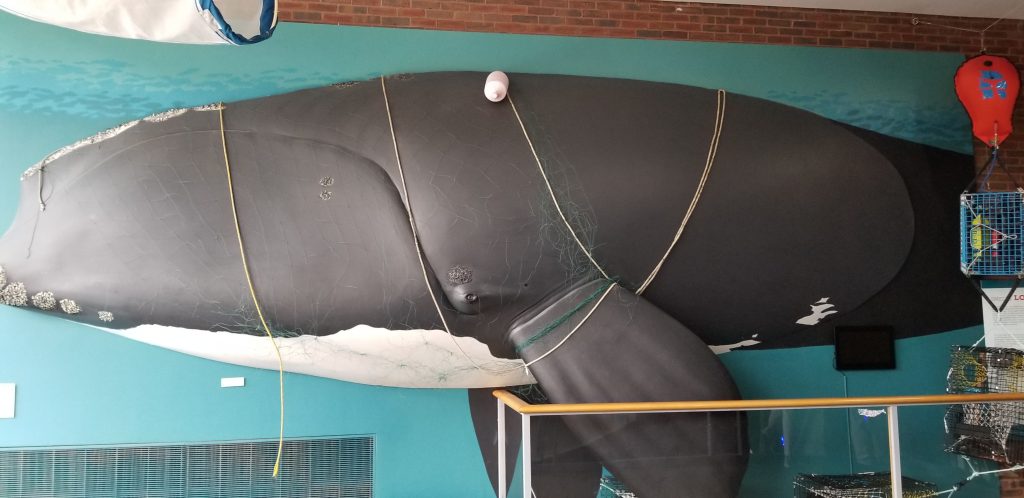
The Tragic Story of Snow Cone
You may have recently heard of the case of a right whale named Snow Cone. She became entangled in 2021 around her mouth. She was then able to give birth to a calf, despite her reduced health. There are three species of right whale: the North Atlantic, North Pacific, and Southern. North Pacific right whales are in a similar situation as their Atlantic counterparts. They have low population numbers and continued anthropogenic threats.
Southern right whales are faring much better. During a panel discussion on physiology at the meeting, someone asked Michael Moore, a veterinarian and marine biologist at Woods Hole Oceanographic Institute, what a healthy North Atlantic right whale looks like. His response was “It’s called an Australian Southern right whale.” That hit me hard. It is true, their southern counterparts are larger, longer, and healthier than both species of northern hemisphere right whales. Their case is chronic, and their poor body condition, low calving rates, and threats seem to be a never-ending cycle that they can’t break out of. Snow Cone was spotted by an aerial survey team in September with poor body condition, and, likely, she won’t survive. She has picked up more gear that is wrapped around her tail and is likely towing traps on the ocean floor. It seems she made the ultimate mother’s sacrifice and gave much of her remaining energy to raise her calf, who was not seen with her and has hopefully weaned. This year’s meeting certainly felt more somber, with everyone still thinking about Snow Cone.
Related to entanglement, here are some key points I learned:
- Since 2017 there have been 56 deaths of North Atlantic right whales due to entanglement in fishing gear
- Currently, mandatory closures are in effect whenever a right whale is detected in certain areas
- Ropeless fishing gear is still in the testing phase, but this type of gear would be allowed during these closures, which is of great value to fishermen
- The area with the highest risk of entanglement is the Gulf of Maine, which runs from Cape Cod to Nova Scotia
- While active gear is obviously a problem, ghost gear (for example, gear that gets washed away in storms) is a problem as well
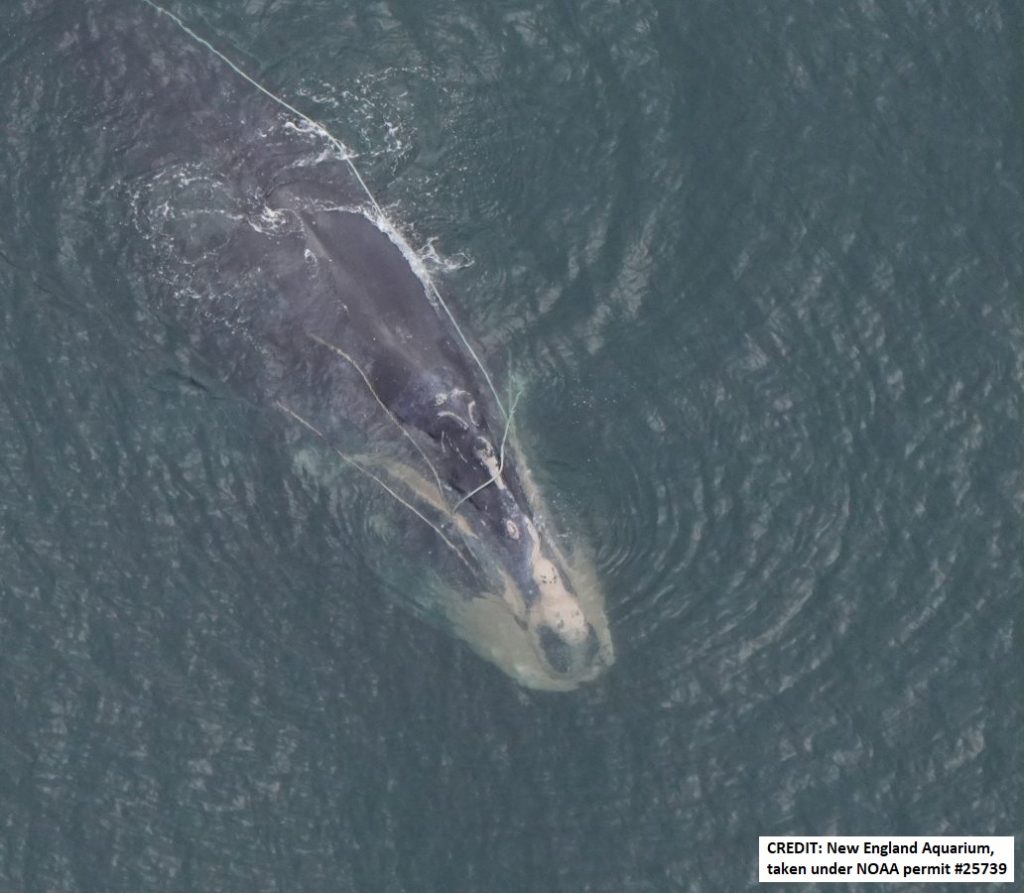
The entire second day was devoted to vessel strikes, entanglement, and how to manage these threats. While the meeting was held in person this year, it was a hybrid event, with many talks recorded beforehand for participants to watch. This allowed for more panel discussions between presenters and other members. I must say, I did feel a bit out of place. Here I was just trying to learn as much as I could to speak with whale watch passengers on the issues, and everyone around me was actively doing the work to protect them. What could I, an informal educator, possibly do to help right whales?
“I do have reasons for hope: our clever brains, the resilience of nature, the indomitable human spirit, and above all, the commitment of young people when they’re empowered to take action.”
– Jane Goodall
While it may seem dire, with only 340 animals left and only about 100 breeding females, can they even be saved? In all honesty, I don’t know. Their numbers have been lower than this before, and species with similar low populations have recovered. It is entirely possible that we could save these animals. The tools are all there: we can pass speed restrictions, we can close fishing areas, we can switch to ropeless gear. All we have to do is do it. As Yoda would say, “Do or do not, there is no try.” After all, even if their numbers are too low at this point, don’t the individuals left deserve to live full, long, healthy lives? They don’t deserve to suffer and die a slow death, which so often happens. Michael Moore once said, “If this were happening to a land animal, we wouldn’t stand for it. But since it happens offshore and out of sight, we continue to let it happen.”
How to Help Right Whales
I am going to take right whales out of the shadows. I will talk about them each time I am on the microphone on the boat, each time I do a public event, and even with my friends and family.
What can you do? Talk to people about right whales. There is plenty of information on Blue Ocean’s website and more (see below). You can also urge your state and local representatives to protect them. If you are old enough to vote, vote for candidates that have expressed concern for environmental issues. If you own a boat, take a boating safety course for marine life, and learn how to spot whales (it can be surprisingly difficult despite their size).
Many members of the consortium have been fighting for YEARS to protect these animals. Now, I am part of the next generation of right whale protectors, and so are you. Being around all these hard-working people has given me a new sense of hope. Hope that someday, they can be removed from the endangered species list, and Blue Ocean can add them to the poster of things we might see on the boat. Will you join me?
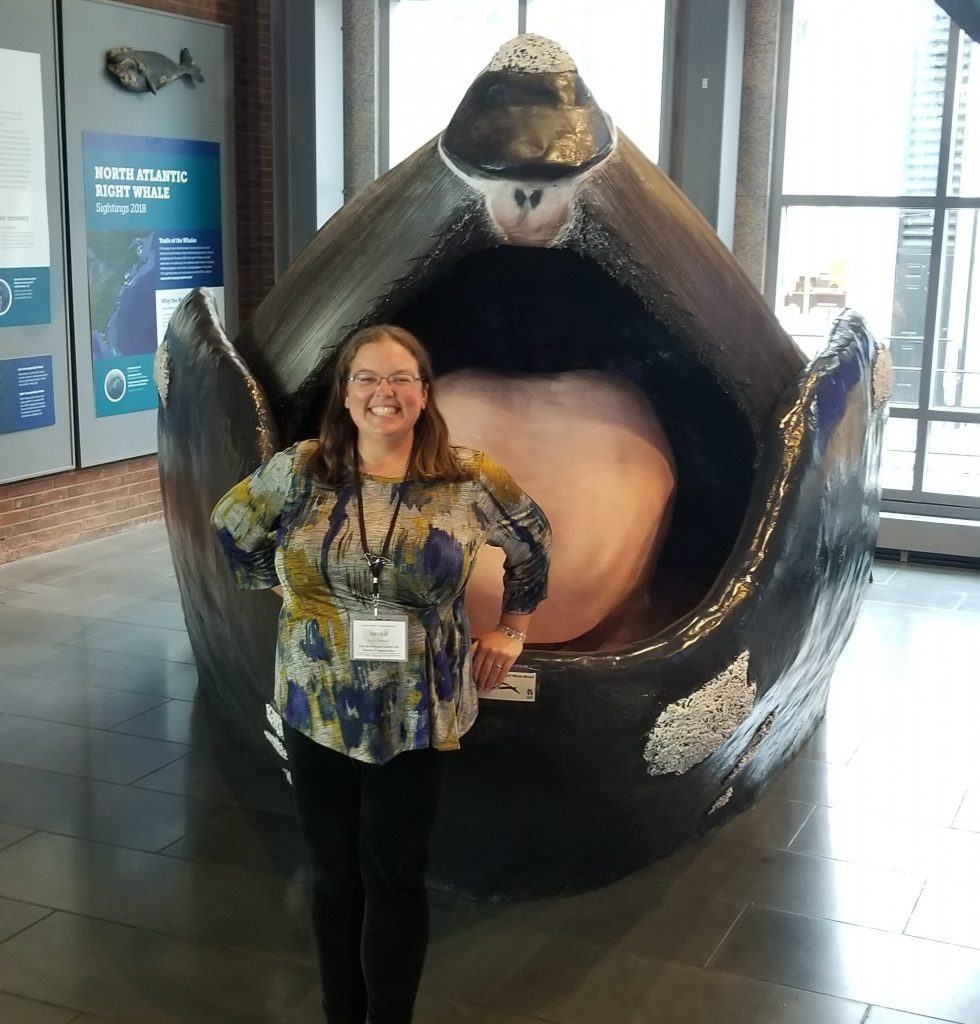
Learn More
- Join us for a presentation related to this post: Sign Up Here
- Learn more about North Atlantic right whales with Year of the Right Whale
- Help keep whales safe by conducting a Beach Cleanup
- Read more about right whales on our Blog and with our Education Materials

